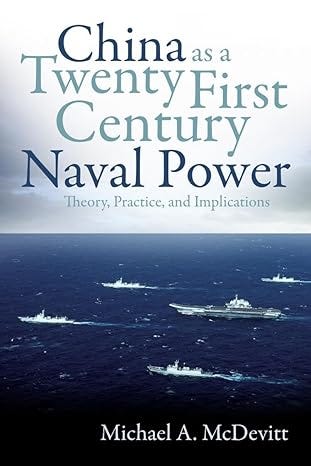China as a Twenty-First Century Naval Power
Theory, Practice, and Implications, by Michael A. McDevitt
If you're looking for an in-depth and methodical look under the hood into China’s drive to become ‘a great maritime power,’ then this is your book: China as a Twenty-First-Century Naval Power: Theory, Practice, and Implications (2020) by Michael A. McDevitt, Rear Admiral, USN (Ret). McDevitt provides a first-class, comprehensive examination of the People’s Liberation Army Navy (PLAN) from the “why” of China’s maritime ambition and its integral linkage to China’s geostrategic vision—securing trade and a national interest-dependent economy—through to the ‘how’ of building the objective maritime capability.
The book is straightforward, study-like, and compelling. While it may lack in storytelling entertainment value, it more than makes up for it by providing the reader with an engaging and balanced examination of the PLAN in its leading role in achieving PRC President Xi Jinping’s goal for China’s armed forces to “become a world-class armed force by 2050.”
In 2018, Xi announced stepping up…
Keep reading with a 7-day free trial
Subscribe to The Military Reading Room - History, Strategy, and Insight to keep reading this post and get 7 days of free access to the full post archives.





